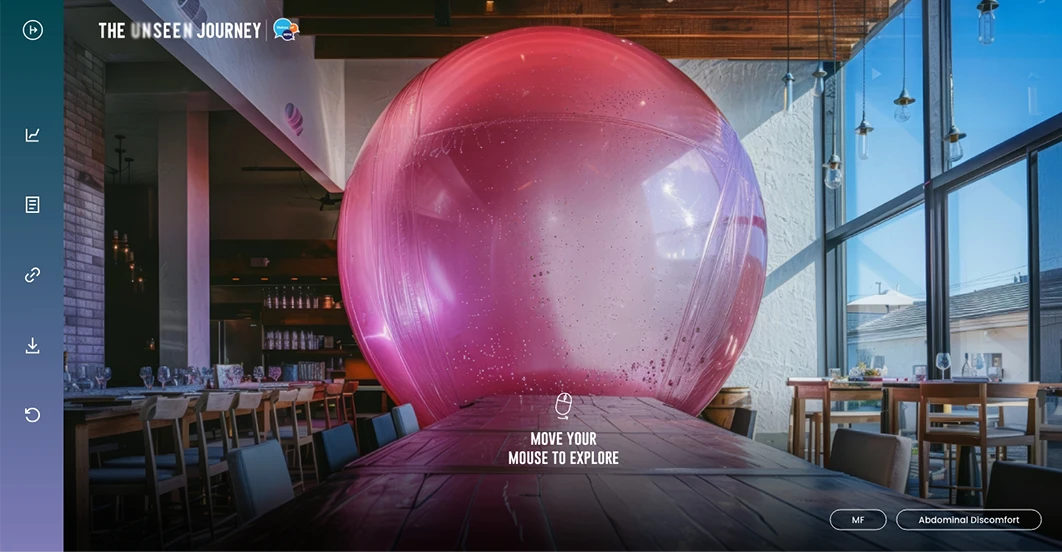BEN H.
ABOUT
When Ben went in for a routine physical, he never expected to be diagnosed with an MPN. Ben found strength in his family as he learned to manage his MPN symptoms so he could be present and embrace the moments that matter most.
BEN H.


“Sometimes my wife notices I’m feeling off. My wife will check in and say, ‘Hey. Is everything okay? Do you need to take a break for a bit?’”


While juggling a busy lifestyle, Ben began experiencing severe headaches, which made it hard for him to concentrate or work. He also bruised and became tired easily, but his doctors initially weren’t worried. After all, Ben seemed healthy.
Before starting a new job in engineering, Ben was required to get a physical exam. He expected the appointment to be routine, but tests revealed his platelet count was unexpectedly high. A bone marrow biopsy confirmed Ben had essential thrombocythemia (ET), a type of myeloproliferative neoplasm (MPN) that causes the body to overproduce blood platelets, which can lead to blood clotting.
Ben’s diagnosis shocked him and his family, but it also brought the symptoms he had been experiencing into focus. He couldn’t help but ask himself, “What else did I miss?” Ben explained, “I started questioning whether there was something I could have done to catch it sooner.”
In addition to fatigue and bruising, Ben had other notable MPN symptoms. Brain fog made it hard for him to find the right words at work, which as a manager was tough since he needed to communicate quickly and clearly. Night sweats made it uncomfortable for him to get a good night’s rest, and bouts of itching made him “want to climb out of his skin” with discomfort.
Coming to terms with his MPN diagnosis was tough, and so was managing his symptoms. One time, while helping his brother on his ranch, Ben’s fatigue forced him to lie down in the middle of a pasture to recover. He also found it hard to stay awake after dinner, which made it difficult for Ben to be the present father and husband he wanted to be. “I was missing out on time with my wife and sons while I was stuck on the couch,” Ben explains. “I could never get that time back. I knew I had to do something.”
Ben decided to switch to a new medical practice to get a better handle on his symptoms. It was at that time his new care team uncovered that his ET had progressed into myelofibrosis (MF), another type of MPN which can develop over time.
As Ben shared his MPN story with The Unseen Journey team, generative artificial intelligence experts turned his words into vivid visual depictions of what it feels like to live with his MPN symptoms. With the help of these images, Ben hopes others can truly understand the reality of living with an MPN.
Ben has learned to keep track of his symptoms by taking careful notes, enabling him to have informed conversations with his health care team. Ben also credits his family for helping him advocate for himself and his care. He says that his wife, who goes to appointments with him, always reminds him “to share information that I would minimize or otherwise forget about.”
By working together, Ben and his family have found ways to help him better manage his MPN so he can enjoy spending time with the people he loves. Ben now looks forward to summers boating on the lake and helping his brother on the cattle ranch. He wants others living with an MPN to understand their diagnosis doesn’t mean they have to watch life pass them by. If people are proactive and advocate for their health, they can still grab life by the horns.

Bring your symptoms to life

Create images that capture your unique MPN symptoms like these patients have through MPN VisualAIzer, an AI tool created specifically for MPN patients. Generative AI takes direction from your words and transforms them into vivid, immersive environments that capture your experience in a whole new way. With these images you can better share your experiences—and your story—with your health care team, friends and family.


